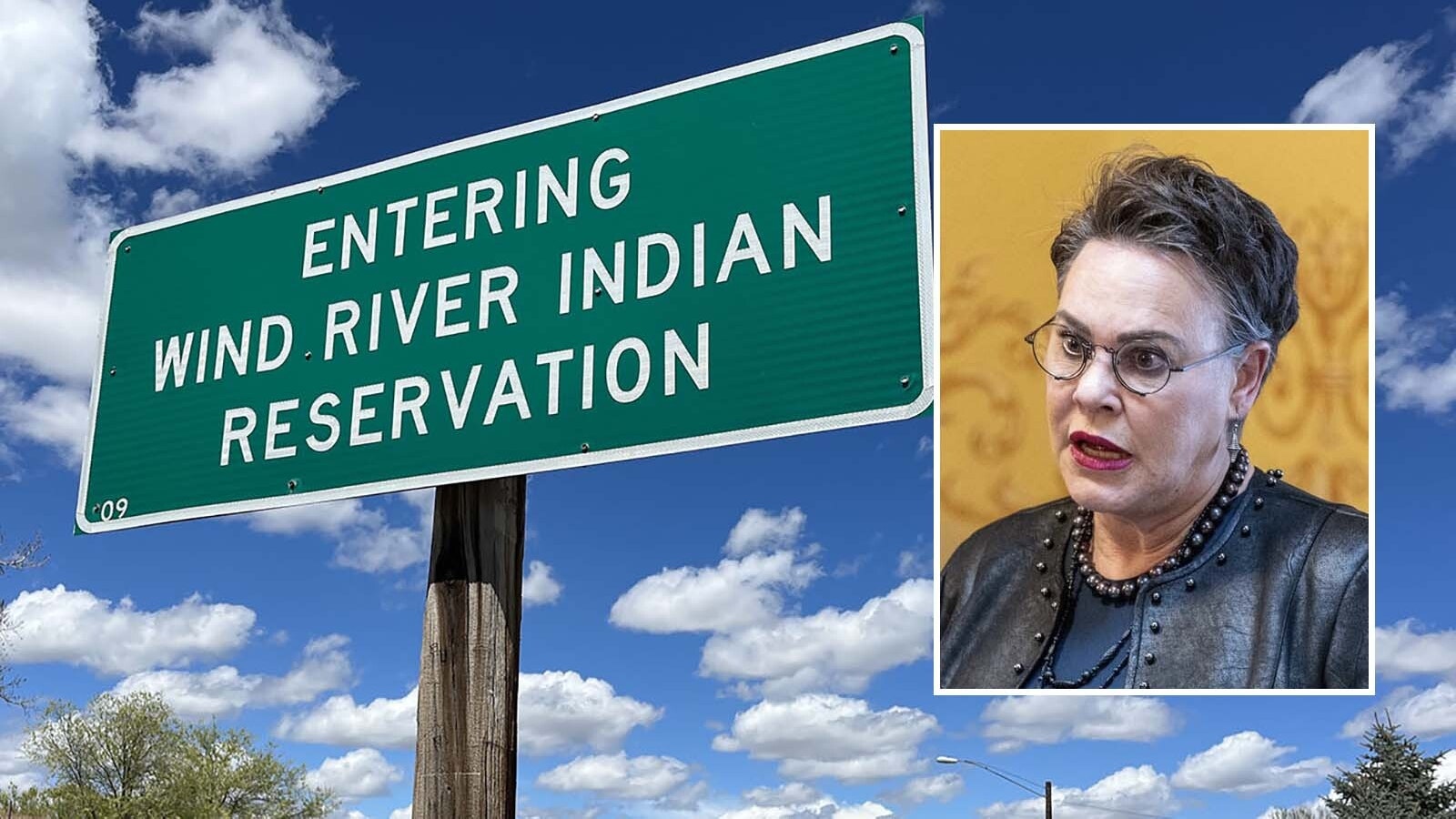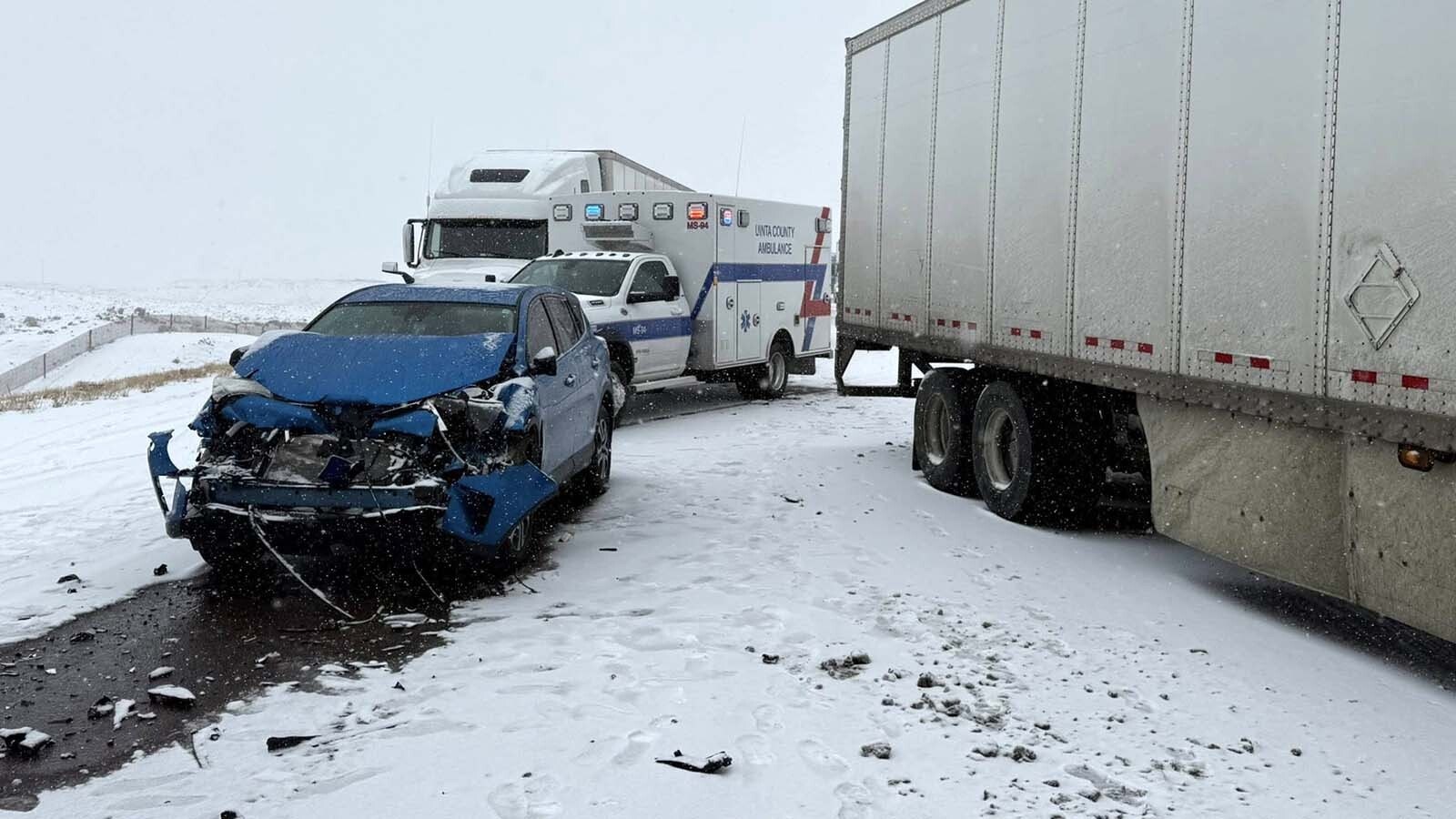Wyoming Department of Transportation District 5 in the northwest part of the state is the first to hit the highways with new long, green lights that look a lot like lightsabers attached to their snowplows and trucks. They cleared snow off Wyoming Highway 28 during a snowstorm last week equipped with them.
“We had the lights on while we were clearing South Pass,” said WYDOT spokesperson Cody Beers. “It’s very preliminary to say how they're working, but there are a lot of reasons why we’re switching to green statewide.”
In the past, WYDOT’s plow trucks marked their presence with flashing blue lights. Beers said there is a deliberate reason to go green.
“Green is often cited as the easiest color for the human eye to perceive,” Beers said. “Green is closer to the center of the visible spectrum at 532 nanometers, so it's easier for our eyes to perceive the color versus any other color on the color spectrum.”
In addition to green flashing lights on the back of the trucks, LED whip lights are being installed on the right edge of WYDOT’s tow and wing plows. They’ll look like lightsabers in the white clouds of snow during blustery snowstorms.
Beers said the whip lights are being tested at the recommendation of WYDOT’s plow drivers. After seeing the lights on plow trucks clearing snow in other states, they suggested WYDOT try the same.
“It's not an easy process to change out the lights on every snowplow in our fleet statewide,” Beers said. “The whole idea is to keep people safe and hopefully eliminate the whole idea that people would run into the back of a snowplow.”
Strike Statistics
When a vehicle strikes a snowplow, it can take it out of commission for an extended period. In January 2025, three snowplow trucks were taken out of commission in a single weekend after they were struck by vehicles.
According to WYDOT statistics, there were 15 snowplow strikes during the winter of 2024-2025, 13 during the winter of 2023-2024, and 25 in the winter of 2022-2023. Many of these strikes didn’t damage the trucks but did total or severely damage their plows and sanders.
According to Jordan Young, WYDOT deputy public affairs officer, the green whip lights have been installed on the fleet’s tow and wing plows because these are most often hit and damaged by vehicles.
“The wing plow juts out from the bottom and helps scrape the side of the road, especially the shoulders,” she said. “They're one of the most frequent things to get hit because they're so low to the ground and out of the field of vision of a lot of vehicles. We wanted to make sure the wing plow was very visible to try to avoid getting struck as often.”
Beers said whip lights are being installed at the right edge of these plows, which can extend up to 8 feet away from the truck while clearing snow. They’re more expensive than other LED lights, but it’s a worthwhile investment if it keeps drivers safe and plow trucks on the road.
“If you see a vertical bar of green that looks to be floating out there in the snow, realize that it’s connected to a plow,” he said. “This is an attempt to try to save money and possibly lives, because someone could get killed from hitting one of our plows.”
Giving Plows A Brake
WYDOT’s new lightsaber safety system won’t be foolproof. Even the brightest lights can still be covered by snow and ice, and they have yet to be tested in the intense winter conditions of Wyoming.
More importantly, the lights are meant to make plow trucks more visible. It’s up to drivers to respond safely and appropriately when they see them.
“This vertical light bar will show where that tow plow is, but we need the public's help,” Beers said. “The main thing is we need to give these plow trucks a brake. And when I say brake, I mean brake. Slow down for the snowplow drivers and don’t attempt to pass them.”
Many snowplow strikes occur when drivers attempt to pass a truck while it’s on the highway. Beers said many incidents occur because of “impatience” rather than severe winter conditions.
“People are being incredibly impatient when they decide to pass our snowplows,” he said. “It’s a huge problem in winter. Our plows will pull over and allow you to pass them when it’s safe to do so, but if you pass a plow on your own, you're inviting all kinds of trouble.”
Young agreed that drivers have the responsibility to make safe and responsible decisions when they find themselves in the vicinity of a plow truck. Accidents happen, but many of the snowplow strikes over the last several years were completely avoidable.
“People should still give the plows plenty of room, and only pass when it's safe to do so,” she said. The road behind the plow is going to be freshly plowed, freshly sanded, and salted. It’s much better driving conditions than whatever mystery lies ahead of the plow, so we really want folks to wait to pass.”
In the meantime, the new bright green lights will make it much easier to see the full extent of WYDOT’s plows once they’re perpetually working this winter. That green bar of light in the whiteout isn’t Luke Skywalker rescuing you on Hoth, but it is a well-intentioned local hero trying to save the day.
“Our snowplow drivers want to get home safe to their families, too,” Beers said. “The bottom line is this is all about safety, so we’re doing our best to make our plows as visible as we can to motorists on our state highways.”
Andrew Rossi can be reached at arossi@cowboystatedaily.com.






